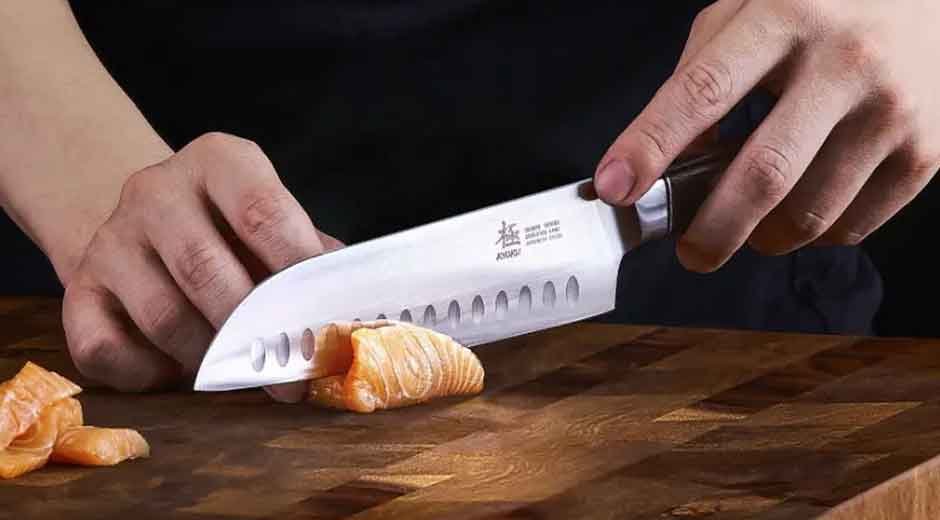When it comes to kitchen tools, few are as versatile and reliable as the Santoku knife. Originally from Japan, the word Santoku translates to “three virtues,” often referring to slicing, dicing, and mincing. True to its name, this knife has become a favorite among both professional chefs and home cooks for its ability to handle a wide variety of tasks with ease. If you’re looking for a single knife to simplify your daily cooking, the Japanese Santoku knife might just be the ideal fit. Let’s look at five everyday cooking tasks that this multi-purpose knife makes easier than ever.
- Effortless Vegetable Chopping
Whether you’re preparing a quick stir-fry or making a fresh salad, vegetables are at the heart of most home-cooked meals. The Santoku’s flat blade and slight curve make it especially effective for chopping carrots, cucumbers, zucchini, and more. Its balanced design allows for fast, consistent cuts, so you can move through meal prep without spending extra time or effort.
- Slicing Fruits with Precision
Ever struggled to slice a tomato without crushing it? The sharp edge of a Santoku knife glides cleanly through delicate fruits, making it perfect for everything from citrus to melons. You’ll get neat slices that look great in fruit salads, breakfast bowls, or garnishes. The precision of this knife also means less wasted fruit and more consistent pieces for presentation.
- Preparing Meat and Poultry
While the Santoku isn’t designed to cut through bones, it excels at trimming fat, portioning chicken breasts, or slicing cooked meats. Its thinner blade gives you greater control for everyday protein prep, and it’s less heavy than a Western-style chef’s knife—making it easier on your hands during longer cooking sessions.
- Mincing Herbs and Garlic
Herbs and aromatics can elevate any dish, and the Santoku makes mincing them almost effortless. The broad, sharp blade chops garlic, onions, and herbs quickly and finely. Better yet, the wide blade doubles as a scoop, letting you transfer your freshly chopped ingredients straight from the cutting board to the pan in one smooth motion.
- Dicing Onions and Everyday Staples
Few kitchen tasks are as routine (and dreaded) as dicing onions. With the Santoku’s balanced feel and razor-sharp edge, you’ll have cleaner, more uniform cuts with less strain on your wrist. It’s just as effective for other staples like bell peppers or potatoes, helping you move through the “prep work” phase of cooking faster.
Tips for Getting the Most Out of Your Santoku Knife
To keep your Santoku performing at its best:
- Hone it regularly to maintain sharpness.
- Use a wooden or plastic non-toxic cutting board to protect the blade.
- Avoid chopping frozen foods or bones, since the thin edge is designed for precision, not brute force.
With a little care, your Santoku will stay sharp and ready to handle daily kitchen tasks with ease.
Conclusion
The Santoku knife is more than just another kitchen tool—it’s a reliable partner that simplifies everyday cooking. From chopping vegetables to slicing fruit and dicing onions, it saves time and effort while delivering precise, professional-looking results.












